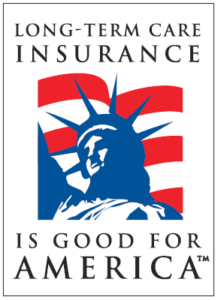 The following is re-published courtesy of friend and highly respected colleague Stephen Moses, President of The Center for Long-Term Care Reform. Steve explains in a nutshell, why Americans are not more motivated to plan for paying for their own long-term care (LTC).
The following is re-published courtesy of friend and highly respected colleague Stephen Moses, President of The Center for Long-Term Care Reform. Steve explains in a nutshell, why Americans are not more motivated to plan for paying for their own long-term care (LTC).
Tuesday, December 6, 2016
Seattle–
LTC Comment: Heads up! We’re about to explain why long-term care insurance sales have disappointed, why people don’t “use their homes to stay at home” and why LTC providers who depend on public financing are at risk.
LTC BULLET: SO WHAT IF THE GOVERNMENT PAYS FOR MOST LTC?, 2015 DATA UPDATE
LTC Comment: Once a year around this time the Centers for Medicare and Medicaid Services (CMS) report health care expenditure data for the latest year of record. Recently, CMS posted 2015 statistics on its website at http://www.cms.gov/Research-Statistics-Data-and-Systems/Statistics-Trends-and-Reports/NationalHealthExpendData/Downloads/Tables.zip.
Health Affairs has published a summary and analysis of the new data titled “National Health Spending: Faster Growth In 2015 as Coverage Expands and Utilization Increases.” Registered subscribers to Health Affairs can access the full text of that article here; the “Abstract” is available free.
Following is our annual analysis of the latest nursing home and home health care data.*
Heads Up: This may be the most important LTC Bullet we publish all year. It is the fourteenth in a row we’ve done annually analyzing the federal government’s enormous, and we argue, often detrimental, impact on long-term care financing. If you’d like to see the earlier versions, go here and search for “So What if the Government Pays for Most LTC.” You’ll find our yearly analyses of the data going back to “So What If the Government Pays for Most LTC, 2002 Data Update.”
——————
“So What If the Government Pays for Most LTC?, 2015 Data Update”
by
Stephen A. Moses
Ever wonder why LTC insurance sales and market penetration are so discouraging? Or why reverse mortgages are rarely used to pay for long-term care? Or why LTC service providers are always struggling to survive financially and still provide quality care? Read on.
Nursing Homes
America spent $156.8 billion on nursing facilities and continuing care retirement communities in 2015. The percentage of these costs paid by Medicaid and Medicare has gone up over the past 45 years (from 26.8% in 1970 to 55.7% in 2015, up 28.9 % of the total) while out-of-pocket costs have declined (from 49.2% in 1970 to 25.6% in 2015, down 23.6% of the total). Source: Table 15: Nursing Care Facilities and Continuing Care Retirement Communities Expenditures; Levels, Percent Change, and Percent Distribution, by Source of Funds: Selected Calendar Years 1970-2015.
So What? Consumers’ liability for nursing home and CCRC costs has declined by nearly half, down 48.0% in the past four decades while the share paid by Medicaid and Medicare has more than doubled, up 107.8%.
No wonder people are not as eager to buy LTC insurance as they would be if they were more at risk for the cost of their care! No wonder they don’t use home equity for LTC when Medicaid exempts at least $552,000 and in some states up to $828,000 of home equity (as of 1/1/17). No wonder nursing homes are struggling financially–their dependency on parsimonious government reimbursements is increasing while their more profitable private payers are disappearing.
Unfortunately, these problems are even worse than the preceding data suggest. Over half of the so-called “out-of-pocket” costs reported by CMS are really just contributions toward their cost of care by people already covered by Medicaid! These are not out-of-pocket costs in terms of ASSET spend down, but rather only INCOME, most of which comes from Social Security benefits, another financially struggling government program. Thus, although Medicaid pays less than one-third of the cost of nursing home care (31.7% of the dollars in 2015), it covers nearly two-thirds (63%) of all nursing home residents. Because people in nursing homes on Medicaid tend to be long-stayers, Medicaid pays something toward nearly 80 percent of all patient days.
So What? Medicaid pays in full or subsidizes almost four-fifths of all nursing home patient days. Even if Medicaid pays nothing with the entire amount due contributed from the recipient’s income, the nursing home receives Medicaid’s dismally low reimbursement rate.
No wonder the public is not as worried about nursing home costs as they would be if they were more at risk for the cost of their care. No wonder nursing homes risk insolvency when so much of their revenue comes from Medicaid, often at reimbursement rates less than the cost of providing the care. The 2015 national projected shortfall in Medicaid reimbursement is $22.46 per patient day and over $7 billion in total. Source: 2015 Report on Shortfalls in Medicaid Funding for Nursing Center Care.
Private Health Insurance
Don’t be fooled by the 8.6% of nursing home costs that CMS reports as having been paid by “private health insurance” in 2015. That category does not include private long-term care insurance. (See category definitions here.) No one knows how much LTC insurance pays toward nursing home care, because many LTCI policies pay beneficiaries who then pay the nursing homes. Thus, a large proportion of insurance payments for nursing home care gets reported as if it were “out-of-pocket” payments. This fact further inflates the out-of-pocket figure artificially.
Assisted Living
How does all this affect assisted living facilities? ALFs are 81% private pay (Source: AHCA/NCAL Issue Brief) and they cost an average of $43,200 per year (Source: Genworth 2015 Cost of Care Survey). Many people who could afford assisted living by spending down their illiquid wealth, especially home equity, choose instead to take advantage of Medicaid nursing home benefits. Medicaid exempts one home and all contiguous property (up to $552,000 or $828,000 depending on the state), plus—in unlimited amounts—one business, one automobile, prepaid burials, term life insurance, personal belongings and Individual Retirement Accounts not to mention wealth protected by sophisticated asset sheltering and divestment techniques marketed by Medicaid planning attorneys. Income rarely interferes with Medicaid nursing home eligibility unless such income exceeds the cost of private nursing home care.
So What? For most people, Medicaid nursing home benefits are easy to obtain without spending down assets significantly and Medicaid’s income contribution requirement is usually much less expensive than paying the full cost of assisted living.
No wonder ALFs are struggling to attract enough private payers to be profitable. No wonder people are not as eager to buy LTC insurance as they would be if they were more at risk for the cost of their care. This problem has been radically exacerbated in recent years because more and more state Medicaid programs are paying for assisted living as well as nursing home care, which makes Medicaid eligibility more desirable than ever.
Home Health Care
The situation with home health care financing is very similar to nursing home financing. According to CMS, America spent $88.8 billion on home health care in 2015. Medicare (39.6%) and Medicaid (36.1%) paid 75.7% of this total and private insurance paid 10.6%. Only 9.9% of home health care costs were paid out of pocket. The remainder came from several small public and private financing sources. Data source: Table 14: Home Health Care Services Expenditures; Levels, Percent Change, and Percent Distribution, by Source of Funds: Selected Calendar Years 1970-2015.
So What? Only one out of every ten dollars spent on home health care comes out of the pockets of patients and a large portion of that comes from the income (not assets) of people already on Medicaid.
No wonder the public does not feel the sense of urgency about this risk that they would if they were more at risk for the cost of their care.
Bottom line, people only buy insurance against real financial risk. As long as they can ignore the risk, avoid the premiums, and get government to pay for their long-term care when and if such care is needed, they will remain in denial about the need for LTC insurance. As long as Medicaid and Medicare are paying for a huge proportion of all nursing home and home health care costs while out-of-pocket expenditures remain only nominal, nursing homes and home health agencies will remain starved for financial oxygen.
The solution is simple. Target Medicaid financing of long-term care to the needy and use the savings to fund education and tax incentives to encourage the public to plan early to be able to pay privately for long-term care. For ideas and recommendations on how to implement this solution, see www.centerltc.com.






 Thanks for visiting my site! I like hearing from you!
Thanks for visiting my site! I like hearing from you!